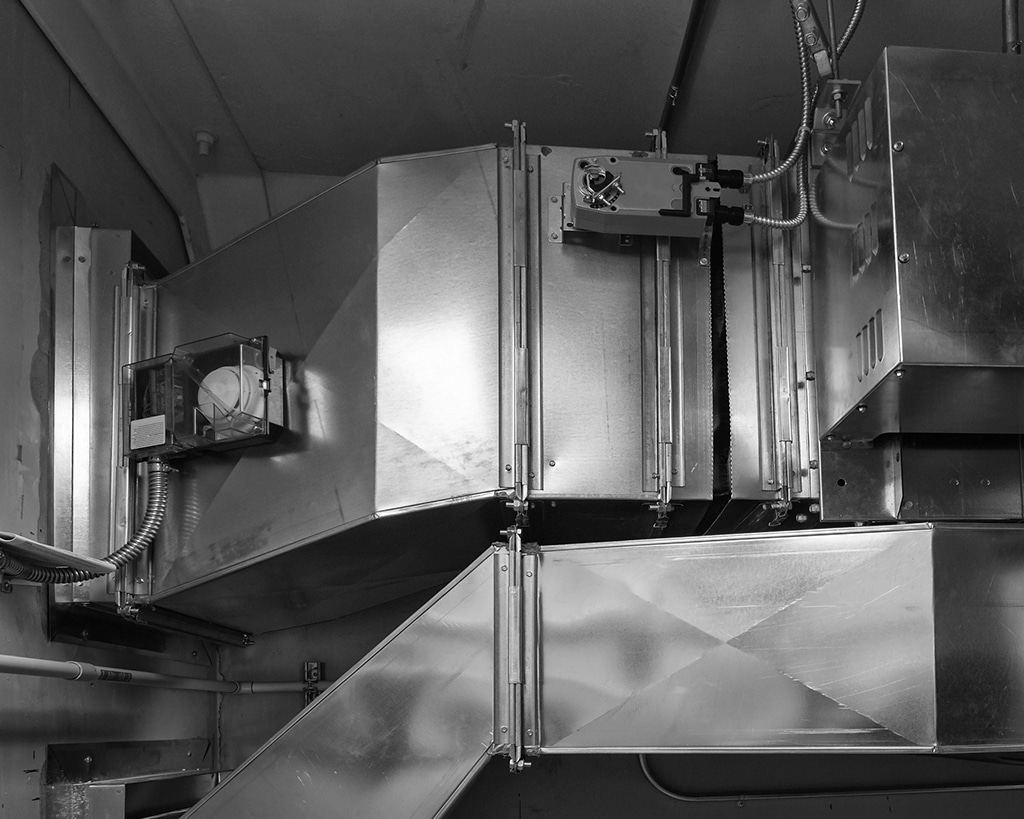
What Dampers Can A Heating And AC Repair Company Use In Your HVAC System? | Fort Worth, TX
In one form or the other, most of the heating and air conditioning systems will have a damper. These components control the volume and direction of airflow within air ducts in an HVAC system. This aims to maintain balanced heating and cool your home. The dampers come in different operational designs, configurations, and functions for automatically or manually controlling airflow. They operate as a door that redirects, allows, diffuses, or stops airflow within a duct-type HVAC system. Why do you need dampers in an HVAC system? How do they work? What may happen without dampers in your heating and cooling system? If you have been asking yourself these questions, you are at the right place. This article looks at different dampers a heating and AC repair company can install in your unit and how they help the system operate.
Role of Dampers in an HVAC System
These components allow a heating and air conditioning system to control the airflow within an air duct HVAC system. They operate similarly to a hinged or revolving door, depending on the type of damper. The dampers are adjustable in many configurations, giving the heating and AC repair company technician precise control over the airflow. Some dampers change the airflow direction, while others reduce the airflow volume in an air duct. Unlike the backdraft dampers, other damper system designs neither change the airflow direction nor reduce airflow. Instead, they allow the air to flow only in a single direction. Balancing and controlling dampers use rotating shutters to control the speed and volume of air within your home.
Types of HVAC Dampers
For residential and light commercial HVAC systems to be balanced, one or more dampers will be utilized: radial, shutter, round-tube, rectangular, collar tube, or blade-style dampers. Generally, industrial dampers perform the same function, though they may require custom design. The primary reason to have a heating and AC repair company install any damper is to limit, stop, or redirect airflow. Several materials are used to build these devices, including galvanized and stainless steel. Each design has specific benefits, such as better sealing, aluminum, one-way operation, and precise airflow control. Below are the types of HVAC dampers.
Blade Style Dampers
Blade-style dampers either use a single rotating blade or many long blades which work together to control the airflow. Because of the air duct shape, most of the blade dampers are square, round, or rectangular. Also called a collar-type damper, the heating and AC repair company typically installs these HVAC dampers near the junction in the system to isolate an area or a zone.
Guillotine Style Dampers
Does your HVAC system need the best sealing? Then you should have a heating and AC repair company install a guillotine damper in the air ducts. The guillotine-style dampers have a gasket gliding against the blades when it closes, similar to what happens in a guillotine, creating an airtight seal. Since the guillotine dampers close so rapidly, they are helpful in emergencies, for instance, when preventing a fire from spreading by denying air to it.
Shutter Style Dampers
An excellent example of the shutter-style damper is the backdraft damper. Design-wise, the shutters hang straight down through gravity until some force (like air being pushed by a fan) forcefully opens the shutters. Whenever the forced air is stopped, shutters close again. Since every shutter slightly overhangs the one below it, air only flows in one direction. The direction of the force. Hence, if you want to ensure a unidirectional airflow at your home, have a heating and AC repair company install shutter-style dampers.
Radial Style Dampers
The radial-style damper provides precise airflow control by rotating multiple blades simultaneously. The technician from the heating and AC repair company can precisely diffuse and control airflow by installing these dampers that open like decks of playing cards. Dampers with radial blades have specific openings and notch locations for maximum efficiency.
Rectangular Style Dampers
These dampers typically use blades that pivot around some center hub akin to balancing dampers. A heating and AC repair company installs rectangular dampers as wall or floor registers. In most instances, a slider is used to close or open the damper blades to control the airflow into your room.
Round-Tube Style Dampers
These dampers are typically longer compared to standard collar dampers. Additionally, they are often self-contained units. Generally, round tube dumpers replace a short section of the flexible air ducts with a rigid, short section, usually less than 24 inches. They contain the controls and the damper itself. However, the heating and AC repair company installs these dampers where needed after the system is operational.
How Are HVAC Dampers Operated?
HVAC dampers can be automatically or manually operated depending on the use of the system and application. For instance, most residential systems use the manually-operated blade dampers. A heating and AC repair company typically adjusts them only once, as the HVAC system will likely stay the same. In most instances, the blade-style dampers are set and adjusted when installed, although they may be changed in the future. However, other heating and cooling systems need greater control and might include plenum spaces that require airflow restrictions. Such dampers are, in most instances, automatically adjusted based on volume and temperature presets and controlled by a thermostat and the system. The radial style dampers are the most notable in this configuration because of their greater control capabilities.
Manually Operated Dampers
Most HVAC dampers will have a collar inside the ducting and be of the blade type. The blade rotates like a revolving door and is slightly smaller in diameter than the duct. The heating and AC repair company technician can control the airflow by limiting or permitting it as needed, thanks to the adjustment locking handle that extends outside the duct. In most systems, the damper is completely open if the handle and the duct are parallel.
Some dampers could require periodic adjustment, but only sometimes. These dampers are frequently manually operated using a cable system. The cable systems, which are extremely dependable and rarely require maintenance, are used to control mechanical actuators which close and open the damper.
Occasionally, ductwork must be installed in less-than-ideal places due to design requirements, necessitating uninstalling or moving other parts for the technician from your reliable heating and AC Repair company to adjust the dampers. Because they reduce the time and effort needed to access a switch, mechanical actuators are incredibly helpful in these situations. The mechanical actuators are extremely reliable and require very little maintenance.
Automatically Operated Dampers
As mentioned above, some dampers are automatically controlled by actuators and electrical switches. A heating and AC repair company installs automatic dampers on complex heating and cooling designs that require greater control within separate zones for a balanced system. The automatic dampers can also be installed in places that are difficult to access manually, for instance, a common attic space.
Newer HVAC damper designs use wireless technology. These dampers are remotely controlled as an alternative to manually controlled dampers that require a routine adjustment. All the dampers are fitted with a transmitter and a wireless receiver communicating between a user and a central command/terminal. They are retrofitted to replace the hard-to-access manual dampers.
What Are the Uses of Dampers in an HVAC System?
Control Dampers
Do you want a means for stopping, allowing, and mixing airflow? Have a heating and AC repair company install control dampers. They perform the functions above by adjusting the rotating blades inside the damper. These dampers are normally thermostat controlled. However, a remote-control gadget can also be used to fully allow airflow, mix different air flows into different ratios, or even stop airflow. In many configurations, the control damper is designed for automatic closing and opening to control the air pressure and volume.
Balancing Dampers
These dampers are similarly related to the control dampers since both close and open multiple blades, restricting airflow. The balancing dampers are usually used between adjoining spaces where one receives a higher air pressure than the other. The heating and AC repair company permanently set the balancing dampers and locks into position. However, they can still be readjusted.
Differences Between Balancing and Control Dampers
Balancing Dampers Feature Parallel Blades
The balancing dampers are specifically designed to impede airflow on one side of the component and increase speed on the other. The balancing dampers usually have 3-4 parallel blades, which all simultaneously move in the same direction. The blades rotate around a center pin. These blades can be rotated at almost 180 degrees.
Control Dampers Feature Opposed Blades
On the other hand, the control dampers use opposing blades that seal against one another, unlike the parallel. Each blade in a control damper rotates opposite to the next blade. This applies pressure against the seal from the two directions. However, both control and balancing dampers are never partially open. They are either fully closed or fully open.
Backdraft Dampers
These dampers are common in residential homes, not just for the HVAC system. The backdraft dampers allow the air to travel in only one direction. Hence, they are used in range hoods, bathroom vent fans, and dryer vents. Backdraft dampers allow the stale air to leave your home while the outside air pressure ensures that the backdraft damper doesn’t open in reverse. These dampers use a shutter that relies on gravity to hang in a closed position till air pressure from the side of your house pushes them. When installed by a heating and AC repair company at your home, they are critical in ensuring no back drafting of stale indoor air.
Industrial Dampers
Inlet Vane Damper
These dampers are commonly used in many industrial applications. They usually install a professional heating and AC repair company near the air intake. In many applications, they precisely control the air pressure and airflow from the blower fan’s inlet side. Unlike other dampers, inlet vane dampers do not have a fixed angle of attack. Inlet vane dampers feature pivotable blades, similar to helicopter blades, so airflow can be more or less.
Butterfly Damper
Because of the size of the structures, industrial HVAC systems can require complex airflow control. For instance, warm air transported long distances through the air ducts may cool off before arriving. To address this issue, the heating and AC repair company installed butterfly dampers for industrial applications to offer increased control over air leaks and flow. Since they employ a circular, flat metal blade, butterfly dampers frequently function best in circular ducts. To change the airflow, the blade revolves around a hub like the hands on a watch. The name comes from the blades’ notch patterns resembling butterfly wings. Butterfly dampers are frequently used for controlling other gases in addition to airflow.
Multi-Zone Dampers
These electrically controlled dampers can be programmed and adjusted per system requirements or programmed in a particular state. Did you know you can subdivide the area needing heating or cooling into different zones? Some heating and air conditioning systems can be divided into control zones for rooms with dedicated air ducts. Each room with its air ducts is considered a zone. Every HVAC zone is programmable and controllable, providing higher airflow and pressure consistency.
However, the multi-zone HVAC dampers can be used with other dampers like control and backdraft dampers to establish a consistent airflow path. Hence, if your home needs to be uniformly cooled or heated, you should talk to your heating and AC repair company about installing zoned HVAC system dampers. These dampers are typically controlled continuously by the thermostat and the system.
Do you have questions about the uses and applications of either damper above? Contact One Hour Air Conditioning & Heating of Fort Worth for more information and any air conditioning service. We will be glad to help you.
See our most recent blog on this topic here.

